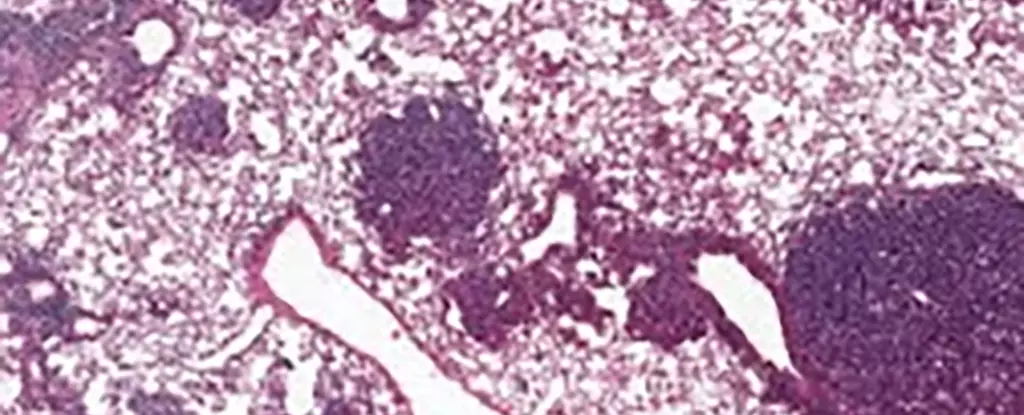As people age, they often face a series of health challenges, including an increased risk of cancer. Intriguingly, this risk exhibits a complex pattern: it tends to elevate significantly in individuals during their 60s and 70s but appears to decline after reaching the age of approximately 80. A recent study sheds light on the biological mechanisms underlying this phenomenon, specifically within the context of lung cancer. This investigation, conducted by an international team of researchers, offers new insights into the behavior of stem cells and their potential impact on cancer development and treatment.
Aging is inherently linked with genetic evolution within our bodies, where ongoing cellular divisions accumulate mutations over decades. In early adulthood, individuals are generally more capable of repairing these mutations, but as they progress into later life stages, this ability diminishes, contributing to an elevation in cancer prevalence. The complexity arises when older adults, particularly those over 80, exhibit a surprisingly lower incidence of new cancer cases. Current research highlights potential causes for this paradox, suggesting that changes in cellular behavior may limit cancer growth in the later stages of life.
A compelling study focusing on alveolar type 2 (AT2) stem cells has put forth significant findings, particularly in the context of lung cancer. The research team analyzed the behavior of these crucial stem cells in aged mice, revealing elevated levels of a specific protein known as NUPR1. This protein plays a vital role in the functioning of AT2 cells, which are responsible for lung regeneration. The higher expression of NUPR1 in older mice corresponded with impaired iron metabolism, causing these cells to behave as if they were lacking iron—despite actually having more of it. This confusion in cellular signaling restricts the stem cells’ ability to regenerate effectively, thus potentially stunting both healthy tissue growth and tumor expansion.
Researchers have discovered that manipulating levels of NUPR1 or iron can lead to notable changes in cellular growth; reducing NUPR1 or increasing iron availability enhances the regenerative capabilities of lung cells. This discovery unveils exciting avenues for potential interventions targeting iron metabolism, particularly for older populations. For example, in the context of patients experiencing long-term effects from diseases like COVID-19, revitalizing lung function could be crucial for recovery.
Moreover, the findings bear implications for cancer therapies that rely on a specific mechanism of cell death known as ferroptosis, which is activated by iron. Aging cells’ functional iron deficiency may render them less responsive to ferroptosis-inducing treatments under development. Therefore, the timing of treatment application could significantly influence therapeutic efficacy, emphasizing the need for early intervention in younger patients at risk.
The study’s implications extend to cancer prevention strategies, suggesting that the carcinogenic events occurring in youth, such as smoking or excessive sun exposure, are markedly more consequential than previously understood. This insight underscores the necessity of focusing preventive measures on early lifestyle choices, potentially leading to reduced cancer susceptibility later in life.
As researchers continue to delve into the complex interplay between aging, stem cell functionality, and cancer biology, the need for personalized treatment approaches becomes increasingly evident. Individualized cancer therapies must take into account various elements, including the unique biological changes that accompany aging and the specific cancer types and stages being treated.
The relationship between aging and cancer is intricate and fraught with contradictions. While the accumulation of genetic mutations heightens cancer risk as we age, certain biological changes may concurrently protect the elderly from new cancer development. The discovery of NUPR1’s role in stem cell and iron metabolism opens new doors for innovative therapeutic strategies and preventive measures targeting at-risk populations. Future research must focus on unraveling the remaining mysteries surrounding the aging process in relation to cancer biology, thereby bridging the gap for more effective treatment paradigms.


Leave a Reply